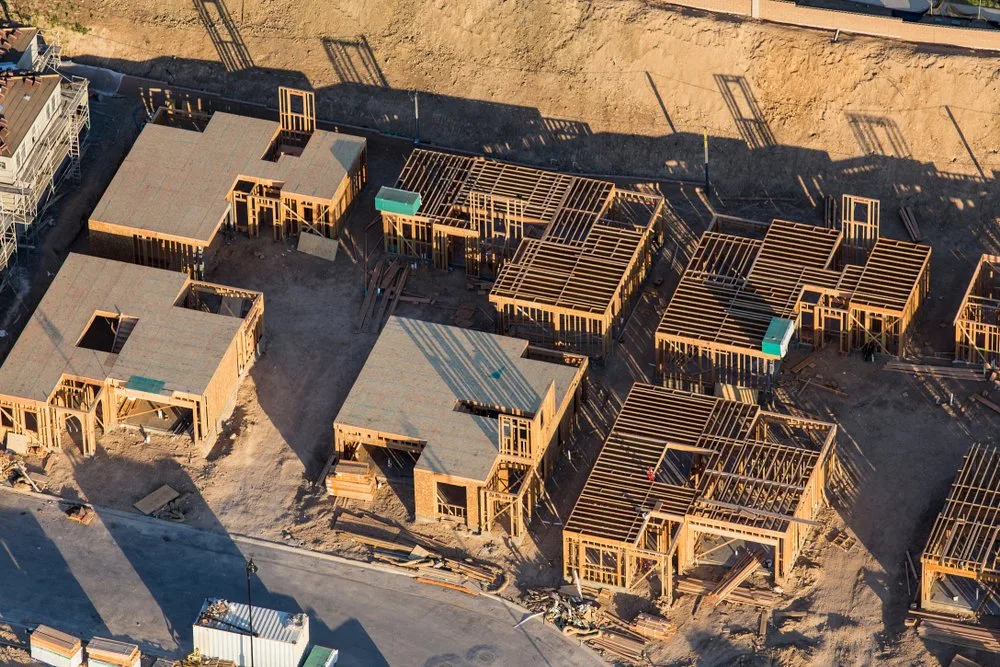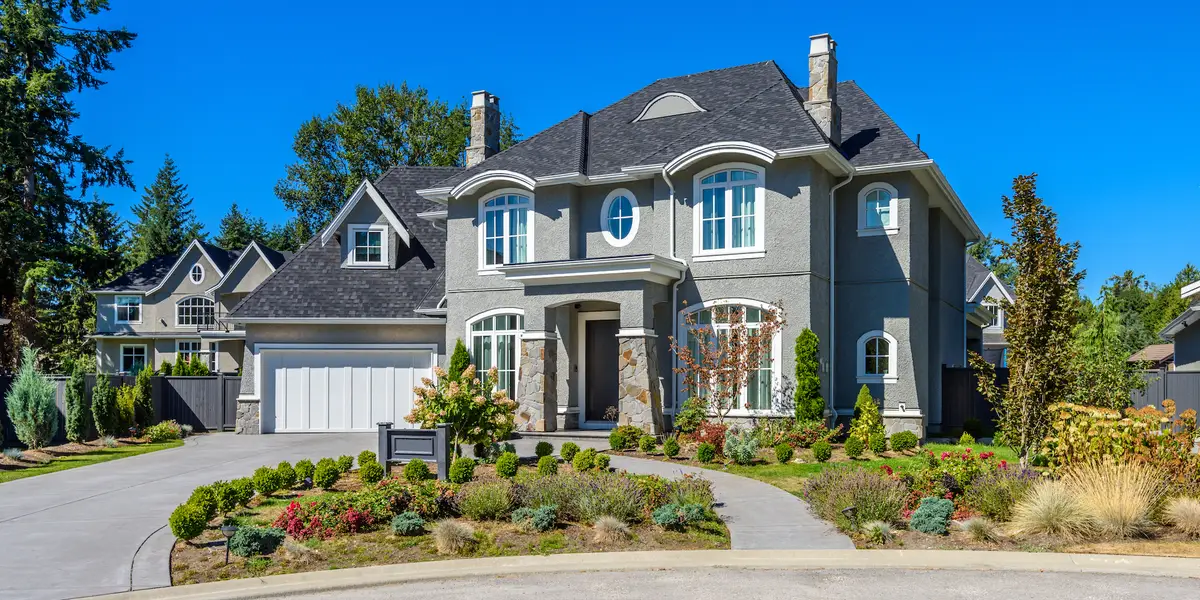I’ve always been curious about how many houses can be built on an acre of land in the UK. It’s a question that matters a lot in the world of real estate and property development. Whether you’re thinking of buying land, planning a housing project, or just interested in how things work, this article is here to help.
The number of houses you can build on an acre of land in the UK depends on several factors, including local zoning regulations, the size and shape of the acre, and infrastructure availability. There is no fixed answer to this question as it can vary significantly from one location to another. In some areas, you might be allowed to build only one or two houses on an acre, while in others, you could potentially build more, especially in denser urban areas.
As a rough idea, if you’re making detached houses with yards, you might fit around 18 houses on one acre. But if you’re building smaller houses like townhouses or apartments, you could possibly fit more houses on the same land. Keep in mind that these are just general estimates, and the real number can vary based on specific factors and local regulations
What are the UK’s regulations on housing density per acre of land?

In the UK, there aren’t national rules about how many houses can be built on an acre of land. Instead, local planning authorities (LPAs) make these rules. They put their housing density policies in something called “local plans.”
Local plans are like roadmaps for how a specific area should be developed. The LPAs create these plans after talking to the people who live there and other folks who care about the place. These plans must follow the National Planning Policy Framework (NPPF), which is the big rulebook made by the government for planning.
The NPPF doesn’t give a fixed number of houses for an acre. What it does say is that LPAs should make rules that encourage good development. This means making sure that new houses fit well with the local area, don’t harm the environment, and work for the community. So, it’s not about numbers only; it’s about building in a thoughtful and responsible way.
When LPAs decide how many houses can be built, they look at things like what the area is like, how much land is available, what kinds of homes are needed, and how new houses might affect the environment and the local area. They also listen to what the people living there have to say about it.
How much is an acre worth in Uk?
The value of an acre of land in the UK can be quite tricky to figure out because it depends on many things. First, where the land is located is super important. If it’s in a busy city, it’s worth more than land in the countryside. Second, what you can do with the land matters too. If you can build houses or shops on it, it’s usually worth more. Third, how easy it is to get to and if there are things like roads and water supply nearby can make it more valuable. Also, if lots of people want to buy land in an area, the prices go up.
The price of an acre of farmland in the UK can change because of different things like where it is and how good the land is for farming. Usually, it’s worth around £12,000 to £15,000. But sometimes, it can be even more, like £25,000 or higher, especially if it’s near a house, which can make it cost around £50,000 or more.
Finally, the government’s rules, the state of the economy, and even if the land has some special features like being close to nature can affect its value. To really know how much a piece of land is worth, it’s smart to ask local experts who know the area well because land prices can change over time.
What is the minimum land size to build a house in the UK?
The minimum land size required to build a house in the UK is subject to various factors, including local planning regulations and the specific location of the land. There is no uniform, nationwide standard for the minimum land size, as it largely depends on the policies and guidelines established by local planning authorities (LPAs). These authorities determine the land use and development criteria for their respective areas, which can vary significantly across the UK.
In a densely populated area like central London, local authorities may allow for smaller land sizes due to the high demand for housing. Here, a developer might find that they can build a row of townhouses on a relatively narrow plot of land, with each townhouse having a small garden or courtyard. The minimum land size required for each townhouse could be as little as 100 to 150 square meters, allowing for efficient use of space and higher housing density.
In a more rural and less densely populated region like the Scottish Highlands, minimum land size requirements for building a house tend to be larger. Here, a developer may need a more substantial plot of land, typically several acres, to construct a single detached house. The larger land size often reflects the desire to maintain the spacious and natural character of rural areas.
In an urban area like Manchester, where available land is limited, infill development is common. Developers may find opportunities to build smaller houses or apartment buildings on narrow or irregularly shaped plots of land nestled between existing buildings. In such cases, the minimum land size required for a single house or apartment might be relatively small, as the focus is on optimizing land use within the existing urban fabric.
In a city with a rich historical heritage like Bath, certain areas may have stringent land size requirements to preserve the architectural and historical character. Minimum land size regulations may be larger in these conservation zones to ensure that new buildings align with the traditional scale and layout of the neighborhood.
Are there differences in housing density rules between rural and urban areas in the UK?
Yes, there are differences in housing density rules between rural and urban areas in the UK. Houses in towns and cities can be closer together, while houses in the countryside have more space around them. This is because rules about how close houses can be are different in different places.
In towns and cities, where lots of people live, the rules often allow more houses on the same land. Sometimes, tall buildings like apartments are also allowed. This is to make sure there’s enough room for everyone.
In some towns and cities like London, the houses can be quite close together, and on average, there are about 50 houses in an area the size of a football field. But in certain parts of London, especially the busy ones, there can be even more houses, like over 200 in the same area.
In the countryside, where there are fewer people, houses are usually more spread out. On average, you might find about 20 houses in an area the size of a football field. in some really quiet rural places, there can be even fewer houses, like less than 10 in the same area.
However, it’s important to know that the rules can be different in different places, depending on what the local government decides. Nowadays, there’s also a focus on using land wisely and being kind to the environment, whether you’re in a town or the countryside.
What are some other factors to consider when building houses?

When building houses, there are several important factors to consider beyond housing density and location. These factors can significantly impact the design, construction, and overall success of a housing project. Here are some key considerations:
Budget: Establish a clear budget that outlines the cost of land, construction, permits, and other expenses. Staying within budget is essential for the financial success of the project.
Design and Layout: Carefully plan the layout and design of the houses to meet the needs and preferences of potential residents. Consider factors such as the number of bedrooms, bathrooms, kitchen layout, and overall functionality.
Materials and Construction Quality: Choose appropriate building materials and ensure high construction quality to create safe and durable homes. The choice of materials can also affect energy efficiency and maintenance requirements.
Energy Efficiency: Incorporate energy-efficient features and sustainable practices into the design, such as proper insulation, energy-efficient windows, and renewable energy sources. Energy-efficient homes can reduce utility costs and have a lower environmental impact.
Accessibility: Ensure that houses are designed to be accessible to people of all ages and abilities. Consider features such as ramps, wider doorways, and accessible bathroom fixtures.
Local Regulations: Adhere to local building codes and regulations, including zoning laws, building permits, and safety standards. Failure to comply with these regulations can result in delays and legal issues.
Environmental Impact: Evaluate the environmental impact of the construction and consider eco-friendly practices. This includes minimizing waste, managing water runoff, and preserving natural habitats when possible.
Infrastructure and Utilities: Ensure that houses have access to essential infrastructure, such as roads, water supply, sewage systems, and electricity. The availability of these services can impact the livability of the homes.
Community and Amenities: Consider the needs of the community, including access to schools, healthcare facilities, parks, and public transportation. These amenities can enhance the quality of life for residents.
Safety and Security: Prioritize safety measures, including fire safety, security systems, and emergency exits. Residents should feel secure in their homes.
Sustainability: Embrace sustainable building practices, including the use of recycled materials, rainwater harvesting, and environmentally friendly landscaping. Sustainable homes can reduce long-term costs and environmental impact.
Future Maintenance: Plan for ongoing maintenance and repairs. High-quality construction and materials can reduce maintenance requirements, but regular upkeep is essential to preserve the value of the homes.
Resale Value: Consider factors that can impact the resale value of the houses, such as location, design trends, and neighborhood developments.
Community Engagement: Involve the local community and potential residents in the planning process to gather feedback and ensure that the housing project aligns with their needs and preferences.
Legal and Financial Considerations: Seek legal and financial advice to navigate contracts, financing, insurance, and any legal obligations associated with the project.
These factors should be carefully evaluated and integrated into the planning and construction processes to create successful and desirable housing developments. Each project may have unique considerations based on its location, target audience, and specific goals.
FAQ
What is the minimum building plot size in the UK?
The minimum building plot size in the UK can vary depending on local planning regulations. There is no uniform nationwide standard, so it’s essential to check with the local planning authority in the specific area you’re interested in.
Can you build a house for 100k UK?
Building a house for £100,000 in the UK can be challenging, particularly in more expensive regions like London and the South East. However, it’s possible in some areas, especially with careful planning, cost-effective construction methods, and simpler designs.
Can I buy land in the UK as a foreigner?
Yes, as a foreigner, you can generally buy land in the UK. However, certain restrictions or regulations may apply, and it’s advisable to seek legal advice and consult with relevant authorities to understand the specific requirements and conditions.
Can I get residency in the UK if I buy a house?
Buying a house in the UK does not automatically grant residency. The UK has separate immigration rules and visa categories for individuals seeking residency or citizenship. Owning property may be a factor considered in some visa applications, but it is not the sole criterion for obtaining residency.
How big is an acre UK?
In the UK, an acre is equivalent to approximately 0.4047 hectares or 4,047 square meters. It’s a common unit of land measurement used in the country.
What is the most expensive part of building a house?
The most expensive part of building a house typically includes the cost of labor and materials for the actual construction, followed by expenses related to land acquisition, permits, and various fixtures and finishes. Construction costs can vary widely based on location and design.
Final words
In conclusion, when it comes to building houses on an acre of land in the UK, it’s clear that there’s no one-size-fits-all answer. The number of houses you can construct depends on a variety of factors, including the location, land size, type of housing, and local planning regulations. Whether you’re in a bustling city or a tranquil countryside, each acre has its own story to tell.
The specific rules and guidelines set by local planning authorities are crucial, as they shape the possibilities for development. Whether you’re a developer, investor, or simply curious about the world of real estate, it’s essential to navigate the intricacies of UK housing regulations.
Remember, the UK’s approach to housing density is diverse, reflecting the nation’s rich tapestry of urban and rural landscapes. So, if you’re ever pondering the age-old question, “How many houses can you build on an acre?” just know that the answer is as unique as the acre of land itself.








